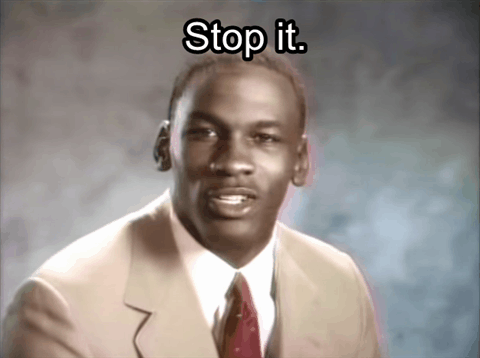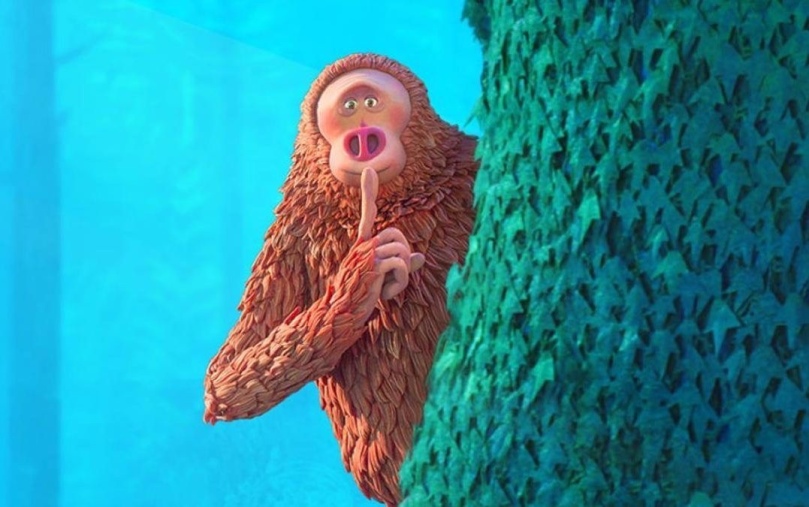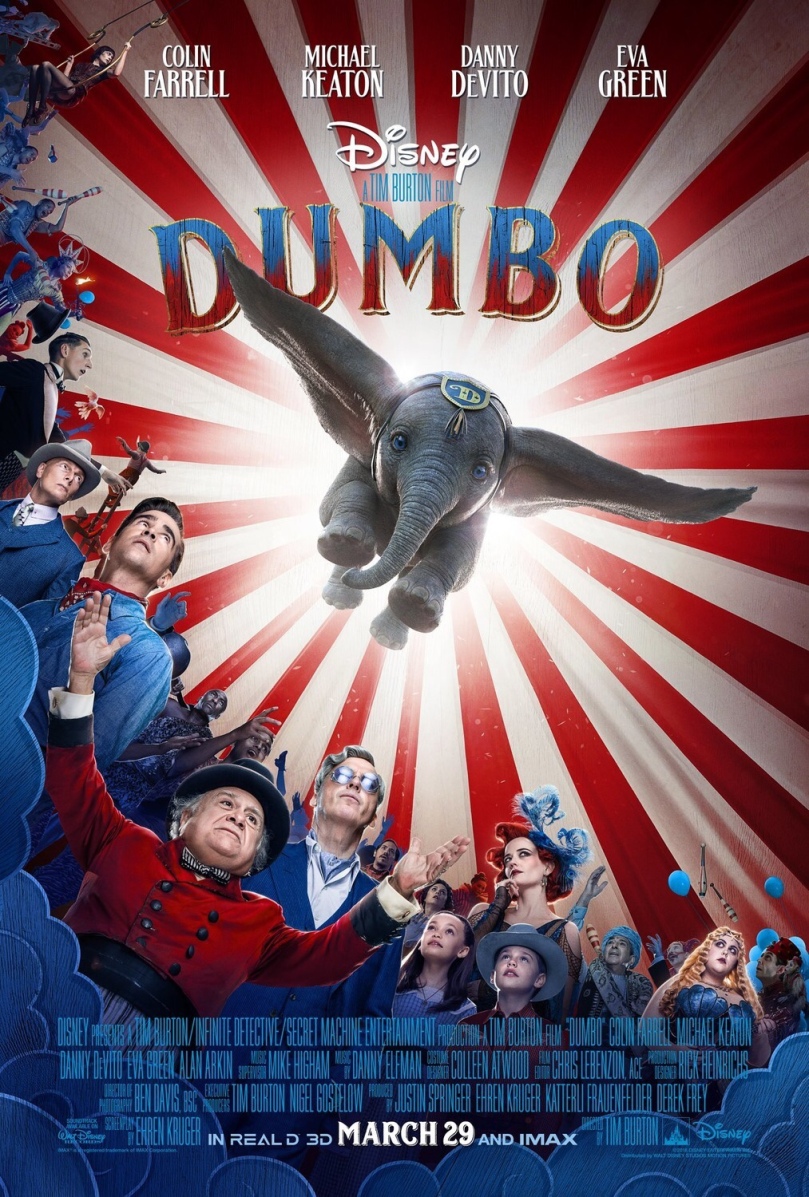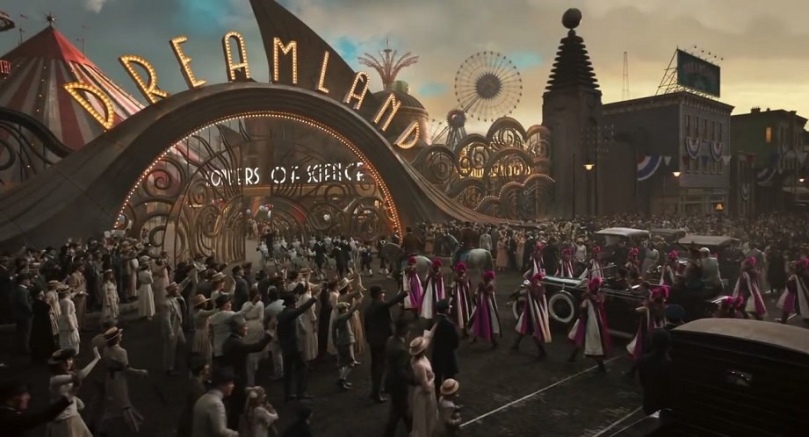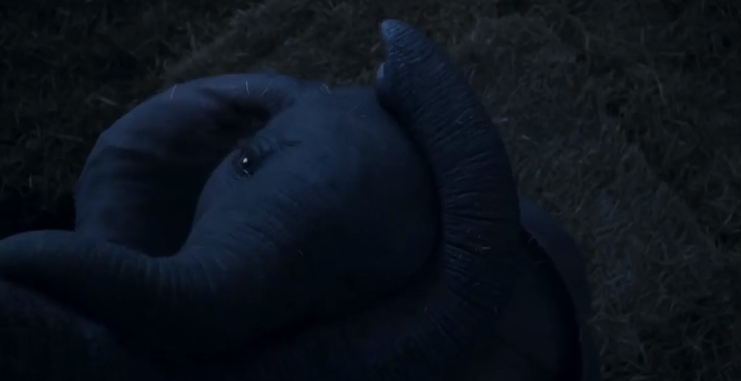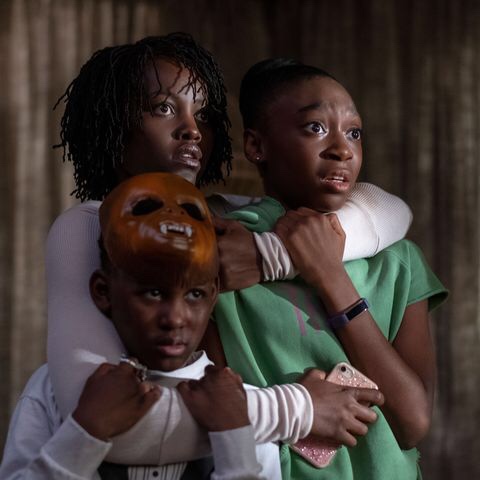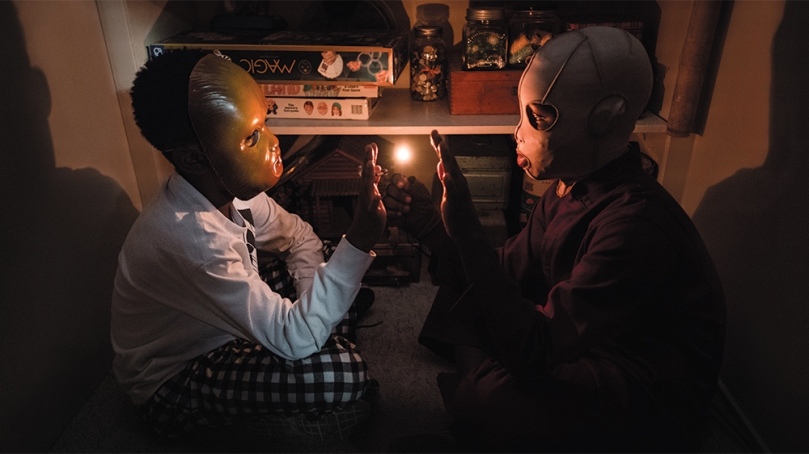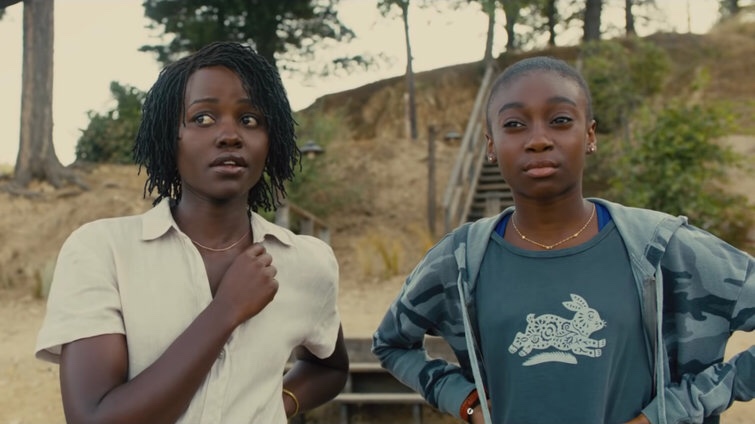
So…you know how sometimes, you get this idea, like “oh I know, I’ll treat myself to something that will allow me to see a lot of movies! I love movies! And hey, maybe I’ll start a movie blog, so I can nerd out about them!! YEAH!!!”
…and then you realize that means you have to see things like Pet Sematary.
Now, let’s reiterate: I am not a horror movie person. At all.
“But you said you saw Us three times!! That’s a horror movie!!” Yes. I did. And did it scar me? Ohhhhhh you BET. But I don’t consider Us a horror movie in the most traditional sense–it doesn’t throw things at the screen just for the sake of scaring you and that’s it. There’s so much more to it than just scares.
(If you’re curious, check out my in-depth review of Us right here)
Pet Sematary, on the other hand. Whew.
I know I didn’t technically have to see it, but if I’m gonna have a movie blog, I think I have to check out big things when I can. Maybe I won’t like it *cough*ALITABATTLEANGEL*cough*, but I still think it’s important to see it and figure out why I feel the way I do about it.
Maybe that’s just an excuse for my 4-ness…
Probably.
Anyway, here’s the thing: this is not a nice, happy movie. This thing is dark. I’m gonna try to humor my way through it as much as possible because I’m pretty sure that’s the only way I’ll survive this, but keep that in mind.
Originally, I was gonna try to write a cheerier version of the review after the gruesome detailed one, but I don’t know if that’s even gonna work, y’all.
So just be warned. This isn’t a fun time in any way.
I mean…there are cats! Yayyyyyy!
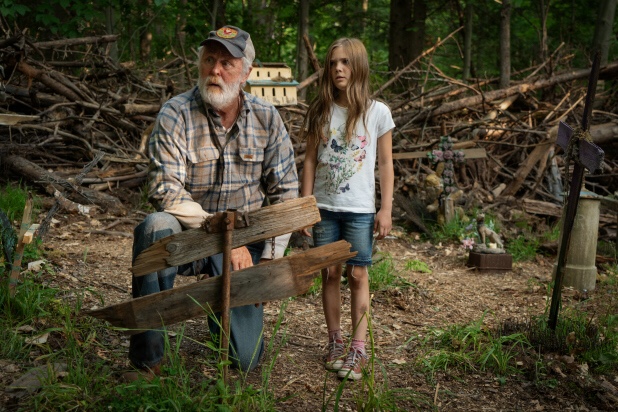
THE PLOT
The movie, which should really be called “White People Mess With Native American Burial Ground, Get What’s Coming To Them,” begins with an aerial shot of a forest, and as we zoom across the land, we see a building on fire. As we zoom in some more, we see a large house, a car parked in front with an open door, and a trail of blood going across the front porch. No one is in sight.
The screen changes to white, and we catch up with the Creed family: husband Louis (Jason Clarke), wife Rachel (Amy Seimetz), daughter Ellie (Jeté Laurence), and son Gage (Hugo and Lucas Lavoie). They’re moving to the town of Ludlow, Maine from Boston to get a fresh start. They seem to be a really close family, and all seems well until they arrive at their new house. A large truck goes loudly speeding by, scaring everyone.
The next day, Louis is off for work at the university (?) as the on-campus doctor. Rachel, Ellie, and Gage are staying home. Ellie and Rachel notice a procession of kids in real creepy animal masks walk by, with what appears to be a dead dog in a wheelbarrow. Ellie is immediately intrigued, and wants to follow them, but she waits until Rachel is distracted with a phone call.
Ellie follows the trail through the woods and winds up at a “charming little landmark” (Rachel’s words): the infamous Pet Sematary. She walks around for a bit, investigating the different graves, until she comes across what almost looks like a dam of sorts. Determined, she starts to climb it, but is startled and therefore stopped by neighbor Jud Crandall (John Lithgow). Ellie is stung by a bee on her way down, and Jud helps her remove the stinger and put dirt on it (because that’s…how you fix things…that or Windex).
Meanwhile, Rachel is on the phone with her own mom, unpacking things while she talks. She comes across a photo of a girl, and although she reacts negatively to the photo, we don’t find out why until a little later. Noticing Ellie isn’t in the house anymore, she goes searching, coming across the Pet Sematary and Ellie and Jud within it. Rachel thinks Jud’s a little sketchy at first (and the Pet Sematary is real creepy), so she grabs Ellie and gets out (now her mistake here is not getting out of Ludlow altogether which is really what she should have done).
That night, Ellie tries to ask her parents some questions about death (“why don’t pets live as long as people?”), but Rachel and Louis are clearly on different pages about this particular topic and the whole conversation ends up being kind of a muddled mess.
Then, we cut to Halloween. Louis is getting ready to take Ellie and some of her friends trick-or-treating, when he sees Jud motioning for him across the drive. Louis goes to him, and Jud shows him what he found: Ellie’s beloved cat, Church, dead on the side of the road. In a rather Anna Karenina-esque twist, Church was hit and killed by one of the trucks that’s always speeding across the road. Louis immediately decides that Ellie cannot see this, so Jud tells him they’ll deal with it that night.
Louis tells Rachel what they found, and Rachel begs Louis not to tell Ellie that Church is dead, just that he ran away. Louis seems reluctant at first, but decides to go along with it. That night, Louis and Jud head out to the Pet Sematary. Just before Louis can start digging the grave, however, something seems to come over Jud, and he asks things like “Ellie really loved that cat, didn’t she?” And “you really love Ellie, don’t you?”
Like yes, Jud, we all loved everyone, you gonna help bury the cat or nah?
But instead, Jud takes Louis over the dam/stick wall thing that Ellie tried to climb earlier, up across a swamp, and on top of some mountain-y thing where he tells Louis to bury the cat and use some of the nearby rocks as a cairn. It’s especially dramatic looking with the lightning striking every now and then.
The next day, Louis and Rachel sit Ellie down to tell her that Church ran away. Ellie says “but he’s right here!” Which is just not what you ever want to hear about a dead cat. Louis goes to investigate, and sure enough, Church is inside Ellie’s closet, alive and well.
Well…alive, at least.
But Church is different. He’s angrier, nastier, bites and scratches everyone. He brings a dead bird onto Louis and Rachel’s bed and starts eating it. He’s all bedraggled and sticky.
Louis, fed up with this, drives Church up to the end of the road and leaves him there.
We cut to Ellie’s birthday party, which she’s having a hard time enjoying because she feels guilty about Church running away again. But just when all hope seems lost, she spots Church casually walking down the road. Naturally, she runs after him, just in time for another one of those giant trucks to ruin everything.
With Ellie gone, Louis now must decide what he wants to do. He knows of a great power in the woods, something that could give him more time with his daughter, but Jud warned him: they don’t come back the same.
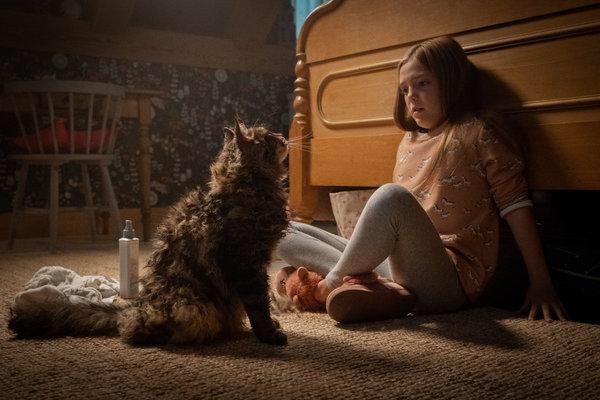
THE REVIEW
So…yeah.
I mean, I really loved Us, right? So maybe I am a horror movie aficionado now!
Nope.
Now, there were moments during the film where I thought “hey that’s kind of interesting–where are they going with this?” Or “wow I actually kind of like this character, maybe they won’t–oh. And they’re dead. Well.”
But generally, as I left the theatre, I was just kinda…numb. I genuinely couldn’t decide how I felt about it. I mean I got home and turned on every light possible, I think, and I started writing this review, but I couldn’t do it. I had to let it sit for a couple of days while my brain calmed down and my heart stopped racing every time I heard a noise beCAUSE WHAT IF IT’S DEMON ELLIE AHHHHHHHHHHHH–
Here’s the thing: I generally don’t like dark, depressing endings. Generally. The exceptions normally come in cases where I feel the dark ending really served the plot, I got really attached to the characters, there’s some deeper, hidden meaning to take away, and/or I feel like the story would have suffered with a lighter ending. For example, in Us, the characters we followed were likable, there was absolutely a hidden meaning, and the twist was there to make us question everything and to make each re-watch different. I saw Cabaret for the first time this past weekend, and that is not a happy musical by any means. But there were great characters, a hidden meaning (especially in today’s world), and the dark ending serves to really make you think about your own actions. If Cabaret had a lighter ending, the entire show would have suffered for it because the point of the plot would have been lost. Odd Thomas is one of my absolute favorite books and the movie adaptation is great, and the ending is absolutely tragic. There is some hope attached to it, but largely, it kicks you in the gut. But again: the characters are great, the tragic ending served the plot and the character development really well, and I do think it wouldn’t be as powerful without what happens in the end.
Now I will also throw in that generally I can do darker endings if there’s some hope thrown in. Isn’t that the whole point of the escapism of media? Don’t we want to leave behind the tragedy of our own lives to live someone else’s for a while?
With movies like Pet Sematary, there is absolutely no hope at all. And that’s…kinda sucky.
I’m not saying there weren’t parts of it I enjoyed, and I’m not saying I didn’t find the overall plot kinda fascinating because I absolutely did; what I am saying is that the ending of a story is really important, and when you don’t give your audiences anything to grasp hold of and instead leave them with the feeling of pulling the rug out from under them and dropping them into a pit below…well, it feels kind of unfair. And I don’t think it did this to everyone; horror movie fans everywhere generally seemed to like the remake.
But the biggest plot twist of all was the major change to the ending of the source material, and I genuinely think the film really suffers for it.
Also it ends so abruptly that when the lights in the theater come back on, you don’t get a chance to come back to yourself beforehand. It doesn’t ease you out of its world at all, and maybe that’s intentional (to up the creep factor, I guess, although…really? Did you really need to? DID YOU WATCH YOUR OWN FILM??).
So let’s dig up the details of this gruesome flick and why I don’t think I’ll be a horror aficionado anytime soon–maybe just a Jordan Peele aficionado.
Major spoiler warning now in effect!!

THE MUSIC
I…really liked the music for this film.
While I definitely don’t watch a lot of horror movies, I do listen to a lot of movie music and can appreciate a good soundtrack. While there were certainly a lot of moments in this film that had the stereotypical “CACOPHONY OF STRINGED INSTRUMENTS MAKING SCARY NOISES!!” Moments, there was a lot to offer besides that.
For example, I have the soundtrack up on Spotify as I type this and it’s just…euhhh.
The first track, “Wendigo,” slowly builds to an absolute nightmare of a track. It plays a lot with certain instruments cutting in and out unnaturally, melodies that go back and forth in your headphones from one ear to another, and my favorite effect: a sound that could either be someone digging up a grave or someone walking unnaturally quickly through the dirt of a graveyard. If you knew nothing of the film it came from, you could still wager a guess based on the title and the track itself what it might mean and that’s amazing.
“The Maine Road” (GET IT BECAUSE IT’S A MAIN ROAD BUT IT TAKES PLACE IN MAINE??????) has a haunting little melody that probably sounds like a cheerful children’s tune in a major key, but as it is in a minor key…it just doesn’t sound right.
“Fielding Fine” is one of my favorite tracks because it’s beautiful–it could almost not be from a horror film, that’s how relaxed and pleasant-sounding it is. It sounds a little sad, maybe, but it’s just a pretty little tune that someone could dance to. I think this plays in the beginning when the family is driving to their new home, and everything, at least at that moment, is okay.
And of course, the final track (before the cover of the song “Pet Sematary” which was written for the original film) is morbidly named “Wasn’t the Beginning?” Because, as you’ll realize once you see the movie, the first shot of the film is actually the ending. Though there’s no text that explains “THREE DAYS EARLIER” or whatever, it all clicks into place once you reach the ending of the movie. The track itself is is a little less horror-movie typical, but it’s sad-sounding, and you feel it in your gut. The track sounds hopeless, like we couldn’t have changed the outcome even if we wanted to, and that sucks. It’s a good track, it’s just morbid what it represents. They even bring back the piano from “Fielding Fine” (though it’s not the exact same tune) just to make me go “well that’s just GREAT.”
Actually, “The Maine Road,” “Just Not the Same,” and “Wasn’t the Beginning?” All feature the same eerie melody in different ways. While “The Maine Road” introduces the tune, it’s purposely warped and messed up in “Just Not the Same” (it even ties into the title). In “Wasn’t the Beginning?” We get the same tune from “The Maine Road,” but it’s played on the piano–and the only other time we heard that instrument was in “Fielding Fine.” The music constantly plays with the tragedy of the story in this way, and it’s…I mean it’s great, but it’s also REAL sad.
Anyway, point being, I actually really, really like the music. It’s scary all on its own without being paired with a horror movie…and I genuinely think the music is better than the movie itself. But we’ll get into that.

THE CHARACTERS
THEY ALL SUCK.
They are the WORST. And I get it, it’s a horror movie, so don’t get attached to anyone anyway, right? If they’re all just gonna die, why make them likable?
But here’s the thing: the suspense was even higher in Us because the characters WERE likable. It was scarier because the thought of losing any of them was just as scary as what might kill them off to begin with.
I wanted to like the characters, I really did, but the movie doesn’t let you. And maybe that’s the point of it. If you know the original story, you know who does and doesn’t make it, so don’t bother getting attached to begin with.
I dunno. I think you can still make likable characters even if the audience knows their ultimate fate, but maybe that’s just me. Characters are an important part of the story for me, so I can’t help feeling like there was such a huge missed opportunity here.
But let’s go down the list, shall we?
Louis is…*sigh*.
In the opening car scene, he seems like he’ll be your typical goofy dad, but that image is quickly shattered. Louis is a doctor, and we learn that a big part of the reason the family moved to begin with is because Louis always worked the graveyard shift (which I guess is a reference to another Stephen King story called The Graveyard Shift) and never got to spend time with his family. You kind of get this impression from him, but you also get the impression that he does really love his family and he wants to do right by them–he just goes about it in the worst way possible.
As a doctor, Louis has a very detached view of death, and we can assume he’s seen a lot of it. But we see this view shaken when he’s unable to save the university student that gets hit by a car (really all I’m learning from this is that everyone in Maine needs to build some damn fences by the roads). He’s shaken by this, so even though he understands death and knows the science behind it, it still shakes him when it hits home, be it someone he’s unable to save or his own family.
He also seems to want to be the ideal dad, which means giving into his wife when she begs him not to tell Ellie about her cat being dead. He wants so desperately to be perfect that he naturally blames himself when Ellie dies. It’s this guilt that, combined with the power he now knows of in the woods, leads him to his absolute terrible decision to bring his daughter back to life.
Louis is frustrating because he’s just so, so stupid. I mean, he’s a doctor, a “man of science” or whatever, Mr. “dying is perfectly natural, Ellie”, so it’s so incredibly annoying when he turns his back on all of that to bring his daughter back despite knowing what bringing Church back did to both him and his family. Despite being presented as the character full of logic, he’s so quick to throw logic out the window once it gets personal.
And maybe that’s the point of his character, the idea that grief is such a powerful force it can make smart people do really, really dumb things, but that doesn’t mean I want to watch it. I mean, isn’t this what we all make fun of horror movies for? Someone hears a noise and they go investigate it despite us being like “NOOOOOO!!!”? Someone stays in a house that is clearly haunted instead of getting the eff out?? So why is it that Louis is presented as such a tragic character when he brought all of this on himself? He’s the reason the rest of his family doesn’t survive the film. If he’d just gone with Rachel and Gage when they’d left and stayed with the family he claimed he wanted to spend more time with in the first place, none of this would have happened. YOU KNOW IT’S TRUE.
Speaking of Rachel…..*sigh*.
The point of Rachel is that she’s just as bad at dealing with death as her husband is, and with their powers combined they are really just Parents of the Year.
Rachel’s backstory in a nutshell: when she was a kid, she had an older sister named Zelda. Zelda suffered from severe spinal meningitis, to the point where she almost didn’t look human anymore and she definitely couldn’t get out of bed. Now, you could have made some point about how Zelda’s illness was amplified in the eyes of a child, and maybe her appearance wasn’t as bad as Rachel believed, but she was a scared little girl (what was that movie about the kid whose dreams became real? Before I Wake? In that film, the big twist is that the evil villain all along was an amplified image of his mom who died from cancer, whom he called the “canker man.” That was a brilliantly tragic twist, but here, Zelda is reduced to jump scares and creepy CGI–all possible humanity is stripped from her for the sake of Rachel’s backstory. And jump scares). Despite Rachel’s fears, her parents leave her alone with Zelda one night and instruct her to feed her sister (Rachel’s parents also qualify as the Parents of the Year). Now, this twist is changed from the source material, where Zelda chokes to death and Rachel is too scared to do anything. In this version, however, Rachel is too scared to even go in her sister’s room, so she sends the food up a dumb waiter that she knows is broken. Zelda ends up falling down the dumb waiter and dying, with Rachel’s last image of her being all twisted and ew and it all being her fault.
So that’s why Rachel is kinda iffy about death. She even argues with Louis when he tries to explain death to Ellie, because she’d rather her kids be protected from it as long as possible. Again, I get that this is the point of Rachel’s character–I do. But she chooses to hide this backstory from Louis up until the plot says she can tell it. It’s this story and how traumatized Rachel is about it that convinces Louis to tell Ellie that Church ran away rather than the truth. Now, if my significant other suddenly spewed out a story like that, I would say “wow, I’m so sorry, and also I think it would benefit everyone if you went to therapy.” Not in a mean way, but just…that clearly broke Rachel as a person, and she never got over it because she was never helped to.
Also she drops her two-year-old son out a window to her husband who brought their dead daughter back to life so, again, PARENTS OF THE YEAR, FOLKS.
Rachel and Louis are so frustrating as a couple because they never deal with anything, ever. Rather than seek help for his grief and maybe chat with his new neighbor friend who also seems to have experienced tragedy, Louis drugs Jud and goes out into the woods to resurrect his daughter rather than deal with her death in a healthy way. Even though his daughter just died, he stays behind because of “work stuff” while his wife and their ALIVE AND WELL TWO-YEAR-OLD SON leave. And when said two-year-old son, Gage, starts having nightmares and talking about the dead university kid Louis talked about earlier, instead of, again, maybe seeking out help and like a child psychiatrist, Rachel says “clearly we both need to go back to the awful house where Gage almost died and Ellie definitely did, nothing can go wrong I bet.”
We’re not even gonna go into how Louis locks Gage in a car and tells him to “not open the door for anyone, even Ellie.” THAT KID IS TWO YEARS OLD, LOUIS. WHAT ARE YOU DOING.
And THEN, Louis has a perfectly good chance to take Gage and leave. He knows now that Ellie is beyond saving, his wife is now dead, too, but Gage is still alive. He can take Gage and they can GTFO. But no, he just LEAVES THE TWO-YEAR-OLD IN THE CAR BECAUSE HE HAS SOME HERO COMPLEX AND DECIDES SURELY I CAN TAKE ON MY ZOMBIE DAUGHTER WHO HAS BEEN SHOWN TO HAVE A CRAZY UNNATURAL AMOUNT OF STRENGTH AND A WHOLE LOT OF BLOODLUST.
Jud kind of teeters back and forth between likable and not, but as we all know, it’s also his fault this all happened, too. Since he was the one to first show the haunted, evil graveyard to Louis and have him bury the cat there, he is very much responsible (although, Louis, again, is the worst in this moment: they pick out a perfectly fine area in the actual Pet Sematary, and suddenly Jud is all weird and asking him creepy questions and guiding him through a swamp that has an unnatural amount of fog and telling him “you have to do this yourself, I can’t help you?” Like…Louis. My man. That is when you get the hell outta dodge, friend). Now, Jud is very much a victim in this story: somehow the evil graveyard spirit possesses him and he regrets it very much. Maybe he truly believed Church would come back different, that Ellie may come back different. But the point is, he still did a stupid thing and everyone else suffered for it.
Also–why is it that Zombie Ellie made a point of resurrecting both Louis and Rachel, but left Jud there to rot? If you want a zombie army, don’t you want all the people you can get? What’s that? It’s because the plot says so?
…fine.
Ellie is the only character I would consider likable (Gage is two, and therefore his only personality traits consist of “toddler” and “has the Shining but it’s pointless because he dies anyway,” so. Also he is the son of the Parents of the Year), which of course means she dies. Ellie, as a nine-year-old, has a morbid fascination with the Pet Sematary and with the subject of death in general. She’s confronted with it when she wanders into the cemetery, and while Jud is happy to explain the history and discuss the stories behind each of the personalized grave markers, Ellie has to be dragged away by her mom who refuses to confront death because NO ONE HELPED HER THROUGH HER TRAUMA, so now she won’t help her daughter through hers.
I do think that Ellie’s curiosity about death plays really well into her zombie self–she says things like “I’m dead, aren’t I?” In such a calm way. Then, however, she gets all murderous and stereotypically evil, so we can’t even have a sympathetic villain because PLOT, I GUESS.
Then of course, there’s Church. I do think the scene where Church watches Ellie killing Jud while purring is extra funny only because I have a cat, and we constantly joke that she’s actually extremely evil and responsible for anything bad that happens. We love her to death (HA, JOKES!) but she’s definitely evil.
Even the ghost guy who’s supposed to serve as some kind of warning I guess is really confusing, because even though he “warns” Louis that the “barrier mustn’t be broken,” he also appears to Gage and that is what sends Rachel and Gage back to Ludlow and therefore, back to their deaths. I just…worst warning omen ever, basically.
Also, wow you killed off the only person of color in the film and had them serve as the supernatural helper, what a new trope that’s never been used before…ever…

THE SEMATARY
Okay first of all, this overhead shot of the sign while Ellie walks inside wasn’t actually in the film itself, and it’s my favorite shot in the trailers. It’s super unsettling and really well-done, and it’s NOT EVEN IN THE MOVIE.
Anyway.
I have to discuss the actual plot device that serves as the namesake of the story: the Pet Sematary. I think my favorite scene of the film is when Ellie discovers it and then walks around it with Jud.
You can tell the set designer and set dressers had a blast with this particular set, and it sucks we only really got to appreciate it for one minor scene. Every grave marker is so personalized, you can tell they thought of the story behind both the pet and the child behind the marker’s design in detail. While it’s certainly eerie (it is a cemetery after all), it’s also incredibly sad.
I mean, the kids of the town created this place specifically because of that stupid road and how many pets it constantly cost them (BUILD SOME FENCES, GUYS, PLEASE).
There’s an air of mystery around the area, and why I think you could very easily do a whole series of short stories just focusing on each grave marker–who was the pet? Who was the child? Did any of them have to be killed more than once because they re-buried them in the cursed land behind the Pet Sematary, like Jud did?
The idea behind the Pet Sematary is my favorite story element, and it’s a shame it doesn’t actually play as a big a part in the film as you might believe.
Also–Jud explains that the Pet Sematary is part of the land that the Creed family now owns…so like, if it’s always been a part of that land, why is it still there? The townspeople apparently didn’t build it on public ground for some reason, so like…why? Unless the original owner was cool with it. But then that means whoever buys the house and the land has the right to just get rid of it and build a park or something (which will still be building something on cursed ground, so like…still not great, but nobody knows that except Jud, right?)
Ooh, I have an idea for Pet Sematary 2…

THE WENDIGO
Alright kids, let’s talk about supernatural creatures/cryptids, shall we?
Because the movie only hints at the backstory and the existence of the Wendigo, it’s apparently supposed to be the evil entity in the woods that controls everything. But again, the movie doesn’t really explain…any of it.
So I tried to do some research on my own, because by the end of the film, the Wendigo was the only thing I was really fascinated by as I was trying to block everything else from my brain to save my sanity.
The Wendigo is a creature from Algonquin myth, and while some stories would have you believe that the creature was originally a hunter/explorer who became lost and then so starving and desperate he resorted to cannibalism, the actual point of the myth is believed to be a story that warns people against greed. The idea is that no matter how much (people) the Wendigo eats, he is never satisfied, so be content with what you have and don’t wish for more because it won’t end well–or, more specifically, craving things you don’t actually need will never satisfy you and only leave you hungry for more.
While it became clear to me how this myth tied into the tale (and quite nicely, too!), this connection is never explored in the actual story, and I think that’s a shame. I read an article about how Western audiences seem to be fascinated by the Wendigo, but for all the wrong reasons: the Wendigo is supposed to be a tragic, yet scary figure. He’s alone and always craving more and more, and is never satisfied. He’s a warning to not be like him, and yet Western stories that feature him tend to up the scare factor over the tragic factor, which…I mean leave it to white people, right? #whyarewelikethis
So just for fun and because I’m a nerd, let’s compare how the legend of the Wendigo has been used in various forms of Western media. And remember, the whole idea behind the Wendigo is that it’s supposed to be a warning against greed–not a horror movie creature.
Let’s start with the one that first introduced me to the Wendigo: an episode of Supernatural.
Supernatural, back when I still really liked it, had a really great “monster-of-the-week” formula, and for its second episode ever, it focused on the Wendigo. In the show, the Wendigo’s backstory is simple: it was a human, it resorted to cannibalism, and now it stalks the woods hunting for campers every 23 years (the 23 years bit is never explained, it just makes it more ~spooky~). Sam and Dean, our two brothers, help out a group of campers looking for some friends that recently went missing in the woods. Sam and Dean consult their father’s journal, back when that mattered (I’m not bitter, I swear), and discover that based off the evidence, the creature they’re now hunting must be a Wendigo. Another trait wendigos are said to possess is the ability to mimic human cries, and this is one way they lure their “prey.” (Maybe the creature in BirdBox is a form of Wendigo…?)
Anyway, wendigos can only be killed with fire, so they end up killing the beast with flare guns (all I can think of is how useless the flare gun was in Us…). Because it’s just the way the show was, the Wendigo was the monster of the week, and was only featured to be spooky, kill some characters, and then die. Now, there are some monsters on Supernatural that have a really sad backstory that the brothers have to get into, but the Wendigo doesn’t get that. He’s simply someone who resorted to cannibalism, and now is a monster.
So does the idea of the Wendigo being about greed tie in here? Not really. Again, the wendigo’s purpose is to be scary and spooky and then die. That’s it.
Now, let’s move to a more recent example: the video game Until Dawn.
Until Dawn is, I think, one of my favorite games (says the person who hasn’t actually played it, but because it’s so story-focused, watching someone else play it is super fun). It does such a great job of setting up a typical “oooh a bunch of idiot teenagers spend a weekend in a spooky house and there’s a masked killer!” Before taking that typical plot, flipping it on its head, and throwing wendigos at us instead! (Also, it has both Hayden Panettiere and my dear son Rami Malek in it, so…yeah)
While the wendigos represent something a little more tragic in Until Dawn than in Supernatural, it’s still not really the tragic point that it should be. The idea is that wendigos have roamed the mountains at this particular ski lodge that Josh’s family owns, I guess, for quite a while. And because it’s a horror game, the backstory given is a creepy abandoned hospital where Experiments Went Horribly, Horribly Wrong. So the wendigos have always been there, but how do they tie into the story of our teenage protagonists?
The year before the main story takes place, a real awful prank was played on one of Josh’s sisters, Hannah. She runs off into the woods crying, and the only one who will go after her is their other sister, Beth. No matter what you choose, Hannah and Beth end up falling off a cliff, presumably to their deaths. That’s why Josh wants everyone back at the lodge that next year: to celebrate his sisters’ lives, presumably.
Except Hannah didn’t immediately die. Beth was dead instantly, and Hannah buried her, but Hannah was trapped and got to the point where she was so incredibly desperate and hungry that she dug up her sister’s body and ate her to survive. This turns Hannah into a Wendigo.
Later in the game, depending on what you choose, Josh is also turned into a Wendigo (I think he gets turned by his own sister, too).
Okay, so that’s really sad, definitely…but does it have anything to do with greed?
Not really. I mean each character has something wrong with them, sure, but none of the characters who turn into wendigos suffered from greed, necessarily. Josh just wanted his “friends” to suffer for causing his sisters to die. Hannah just wanted to be alone after being humiliated by people she trusted (and by the guy she liked).
It’s super sad and really well done, but again, the wendigos are presented as Scary Creatures to be killed because they’re a threat, and that’s about it.
Now, while the Wendigo in Pet Sematary certainly makes sense (Louis was so greedy when it came to wanting to have more time with his family, he ended up killing all of them and now they’re all stuck being zombie family together forever), the connection isn’t explained in context of the film and that’s frustrating and, in my opinion, a huge missed opportunity. It’s presented as a family horror drama with a light sprinkling of supernatural that’s never actually explained, and I think if you’re gonna bother throwing a Wendigo reference in, you should bother explaining it and expanding on it. Again, maybe in Pet Sematary 2…
So is there a Western piece of media that uses the Wendigo in a more proper way, tying into the original legend a bit more?
Team, let’s talk about Hannibal.
Hannibal is one of my favorite shows from recent years, even though I would absolutely have to take a break in between episodes to let my brain calm down. It’s beautifully shot, beautifully acted, and incredibly fascinating. It’s also incredibly dark, and therefore, not for everyone. But just like Us, there are an infinite number of theories about Hannibal because so much of it is symbolic.
On the surface level, it makes sense to have Wendigo symbolism in a show about the most famous fictional cannibal…ever, but the show gives us so much more than that. There’s so much to infer when the Wendigo comes onscreen (besides the fact that the Wendigo is revealed to be, of course, Hannibal himself). All of the characters in Hannibal are both incredibly likable and incredibly unlikable all at once. Hannibal himself is classy, lonely, put-together but also incredibly evil–his quiet demeanor makes him all the more frightening when we see him kill. Will Graham is just a mess, but he’s also lonely, confused, and brilliant. Both Hannibal and Will are greedy for what they find in each other. Hannibal thinks Will is fascinating, incredibly talented, and incredibly broken. He finds a mirror in Will that he didn’t think was possible. Likewise, Will finds a human in Hannibal he didn’t expect to since he’s actually the killer he’s been hunting this whole time. But they’re also greedy in what they do in everyday life. Hannibal is greedy for recognition and, of course, for killing (and eating). Will is greedy for recognition, too, but in a way that gets him respect so people stop thinking he’s crazy. It’s a beautiful character study of a story, and the Wendigo serves as an important symbol that isn’t shied away from or used for cheap scares.
I’m sure there are more, but these are the examples I’ve personally come across. My point is, the legend behind the Wendigo and the tragedy, the warning about greed, is a fascinating story point that I think could tie into horror stories really, really well, and it just…doesn’t. The Wendigo is used for The Scares, or to be a background character so we can focus more on the idiotic humans (they’re just…THEY LEAVE A TWO-YEAR-OLD IN A CAR).
Which brings us to…
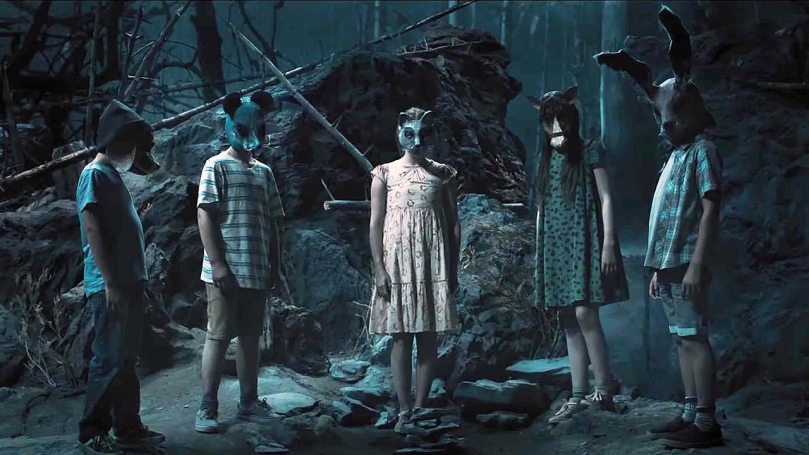
THE STORY I WISHED WE’D GOTTEN
Imagine for me, if you will, a story where the Wendigo plays a bigger role. Instead of being reduced to background lore and a minor appearance in the shadows, he’s the Big Baddie…or is he?
I use this photo here because I guess, originally, the kids in the creepy animal masks were supposed to play a bigger role. They were supposed to know all about the creepy cursed graveyard, and they were supposed to be somewhat supernatural themselves. Maybe they were supposed to be zombies, too, and that would explain why Ellie wears the cat mask when she goes on her murderous rages.
Imagine a story where Ellie is lost because of tragic circumstance. Where Louis imagines doing the unthinkable, but then remembers his own words to his daughter about how “dying is perfectly natural,” and he can’t bring himself to do it. He goes to Jud’s that night not dead-set (haha, puns) on a decision, but instead broken and in need of comfort. He confesses what he thought about doing, but he says he couldn’t bring himself to because she wouldn’t be the same, right? Jud is able to comfort Louis and apologize for even showing him the graveyard to begin with, and the two find solace in their own grief.
The next day, still hurting but maybe a little better, Louis tells Rachel that there is something out there in the woods, and he feels like he owes it to Jud, to Ellie, to dear, evil Church to figure out what’s really happening. Maybe she’s confused and upset, initially, because why won’t he just be with his family? But then Gage has nightmares, both about ghosts and about the Wendigo. Rachel’s unnerved by this, but she decides that she should definitely be with Louis, and if he’s determined about his, maybe she should be, too.
The third act is changed from a murder spree into a hunt, as Louis, Jud, and Rachel team up with other townspeople to learn about the Wendigo and decide that if the cursed ground is too tempting, maybe there’s some way to get rid of it, and the Wendigo, for good.
But in the final confrontation between Louis and the Wendigo, he sees himself reflected there. Maybe the Wendigo, if it was a person originally, lost his family, too. In a Donner Party-esque twist, maybe the only way to save the rest of his family was to have them all eat the dead member, but once they find out what he did, they’re so torn apart and distraught they can’t cope anymore. Filled with grief but also, now, an insatiable hunger, he eats the rest of his family, too. This is a tragic creature who is never satisfied, and preys on the people who are just like him. He hunts for those who crave more time with the departed, rather than be thankful for the time they had. He encourages people to use the cursed ground because it is how his evil, and his pain, will spread.
Maybe Louis still, ultimately, has to kill the Wendigo. Or maybe Rachel does. Maybe when they do, Church dies all over again, now without an evil spirit fueling him. Maybe the kids with the masks, revealed to yes, have been zombies this whole time, serving the Wendigo, also die, for real this time. Their masks fall away, revealing the human children underneath, finally free from the torment of serving the evil spirit in the woods. Maybe the fog finally leaves the graveyard, the sun rises, and the dead swamp is suddenly filled with the sounds of birds, frogs, insects…life, real life, has returned to the area.
Louis, Rachel, and Gage move away from Ludlow. Jud stays because it’s the only home he’s ever known, and he feels he has a duty to the townspeople there. They reflect on the wendigo’s story, and it’s implied that they’re actually better off now for their experiences, however horrible they may be. They visit Ellie’s grave once more before they leave, and Louis places her stuffed cat toy on her grave. Maybe they buried Church, properly this time, beside her. Maybe as they walk away, Gage sees his sister and her cat standing there, watching them, finally at peace.
Louis is able to confront his grief and how death changes when it’s personal, but that it’s still natural. Rachel is able to confront her fear of death and maybe even overcome it, even in a small way. Jud is able to truly apologize for his actions and save someone, just like he always wanted to. Gage is never left alone in a car. Ellie still dies, which is the whole “realism” Stephen King apparently wanted with this tale, but she doesn’t have to suffer as an innocent and the victim of a freak accident.
I realize, of course, this is all a moot point, as the source material for the story is nothing like this. However, though the movie may share a name, characters, and a good portion of the original story, so much of what was crucial was changed that it’s basically an entirely different story now. So why not go in the positive direction?
Oh, right. Because that’s not “cool,” I guess.
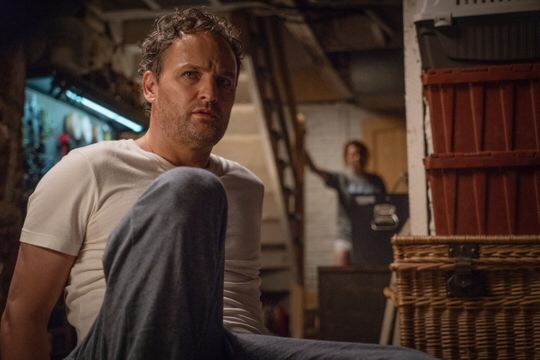
THE ENDING
The ending for Pet Sematary is real dark.
There is no hope anywhere. As much as people want to claim it’s ambiguous because Gage’s death is not shown, it’s not. The beginning shot of the film showed Jud’s house on fire, which we see at the end, and it showed the Creed’s house with the blood trail from Rachel, leading away into the woods, and we see their car, the front door open. Unless some magic individual showed up, fought a bunch of zombies, and took Gage, or Gage suddenly developed superpowers and escaped his family, Gage is dead, too.
Absolutely everyone dies, and the implication is that no one can escape the pull of the evil graveyard. That’s it. Quite literally, life sucks and then you die (and then sometimes your deranged family brings you back to life as an evil zombie).
I don’t know who to blame for this sudden surge in absolutely dark and depressing endings in media, but I think I’ll blame Game of Thrones. Along with, like, maybe The Walking Dead. It may be subversive and interesting when you first see it, but then when every story does it? It’s not interesting or a plot twist, anymore. It’s just damn depressing.
Pet Sematary claims to be a story that focuses on death, how it’s inevitable, and how maybe it’s not the best idea to lie about it or “protect” people from “the truth.” I get that it’s one of those things that isn’t exactly a fun conversation, but it has to happen at some point, right? Pet Sematary is like the ultimate worst-case scenario, where a group of people who were never taught to handle death in a healthy way get power over it, and everything literally goes to hell.
In some ways, it is that.
But it’s also just really, really depressing.
In the alternate version of the story I came up with back there, all of those topics are still handled, but the audience is still given some hope. We see a family go through a terrible, horrible tragedy that we hope will never befall us but, unfortunately, it still might. They go through it and they come out stronger for it. Yeah, it sucks, and of course we’d all prefer that it never happened, but it’s not like it happened in vain. They learned from it, they moved on in a healthy way, and they confronted something that they weren’t good at dealing with at first.
My alternate version can still be plenty scary, of course, but it can also make the viewer think about what they saw and how it applies to them. As it is, Pet Sematary tells the viewer that no matter how much you may prepare for it, death can come when you least expect it, there’s nothing you can do, and if given the chance to have power over it, humans will take it and mess it up, no exceptions.
Which like…well, shit.
Now don’t get me wrong, Us still ended with a lot of bloodshed, and the revelation that the person we were cheering for was lying to us the entire time, and that’s pretty unfortunate. But we still had characters we liked who survived, who looked their supposed fate in the face and said “um, no” and don’t we all hope that we would be like that if faced with the same thing?
We watch and read dystopian stories not for the horrible state the world is in at the beginning, but for how our heroes will rise above it and win in the end. Our own world is so scary right now, why would we ever subject ourselves to the same thing in media?
But maybe that’s just me, because Pet Sematary has a lot of diehard (HAHA, PUNS) fans just the way it is. I may not understand it personally, but it’s all a matter of taste.
I still think, however, that creators need to learn that maybe, just maybe, we want heroes to win. We want to see ourselves in characters onscreen who get a happy ending, because maybe we feel like we’ll never get one in our world.
Apparently, Pet Sematary had three different endings that were shown to test audiences, each one darker than the last. Because the last one seemed to get the biggest reaction from audiences, that was the one they went with.
But I think creators are misinterpreting good writing that gets a reaction vs. unfair writing that gets a reaction. When we watch a tragic ending that actually serves the plot, leaves us all better for it, and is handled with care, they get a big reaction. But when a good character dies for a tragic ending in an unexpected, unfair way that is never explained, never fully dealt with, and all done for the sake of a plot twist, they get a big reaction, too. But it’s because we feel cheated, not because we feel fulfilled.
And maybe creators don’t actually care about that, but I think media creators need to realize that, despite Jud’s warnings, sometimes dead is not better. A big reaction isn’t good if it’s full of anger because something was tastelessly done, or done simply to get people talking about it. There’s a way for these characters to complete their arcs and be handled with care, rather than just be killed off for the sake of some scares and a really dark ending. I don’t know, I think we’ve all had enough of that.
(And yes, this is absolutely also serving as a callout post for the TV show The Magicians, who recently killed off a great character in the most tasteless way possible, all for the sake of a plot twist and “big reactions,” and I’m still real bitter about it)
I mean, at least with Funny Games, the creator out and out said it was as dark as it was to be a direct jab at the media for glorifying violence as entertainment. Pet Sematary is dark and violent just to scare people and just to get a big reaction without a deeper meaning or message explicitly stated. Kinda cheap, when you think about it.
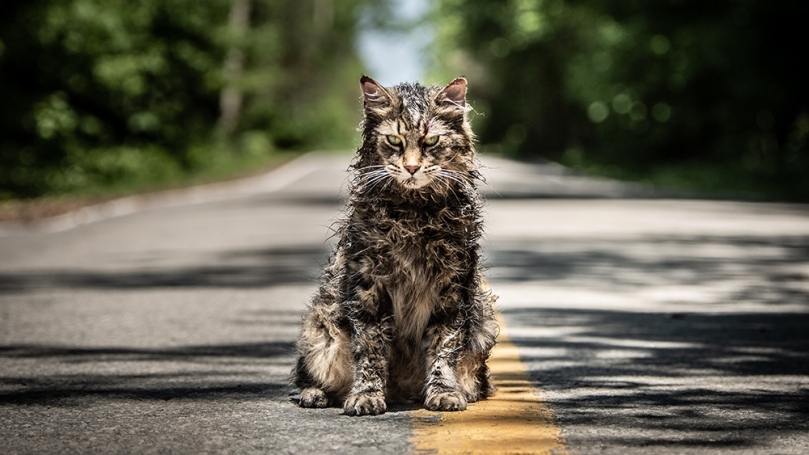
FAVORITE MOMENT
Ughhhhhhh um…this is gonna be really weird, but I actually really like how Ellie’s death scene happens? I like how it’s implied that the evil spirit possessing Church made it so that Ellie would be lured out into the road, like it knew that Ellie’s death would lead to a whole lot more zombies later.
So Ellie gets lured out, but Gage gets lured out, too, and Louis is able to save his son…and not his daughter. It’s actually a lot more tragic this way, I think, and a lot more “realism” I guess, if that’s what you want. The sound also cuts out when the gas tank flies off the truck, so it’s completely silent and slow-motion as Louis stumbles over to the road, sees Rachel falling to her knees to crawl away and sob…and it’s silent as he cradles his daughter’s body.
It’s surprisingly emotional, and absolutely meaningless later because remember kids, you can bring anyone back as a zombie, so sadness doesn’t really mater. Yay!
Also, this doesn’t count as a moment, but I loved learning about all the cats that played Church and how they had specific makeup artists and such. I love it.
“OOF” MOMENT
Listen, I know the haunted evil burial ground is supposed to be all spooky and mystical, but ohhhhhh man when it was first introduced, it was sooooo over the top with its fog machine effects, thunderstorm effects, lightning everywhere…I mean, I felt like we should be in Dracula’s lair or something.
It just wasn’t that scary, just ridiculously over-the-top and kinda goofy.
But it’s okay, we got plenty of jump scares featuring Rachel’s dead sister to make up for it! Yayyyyyyy!!!
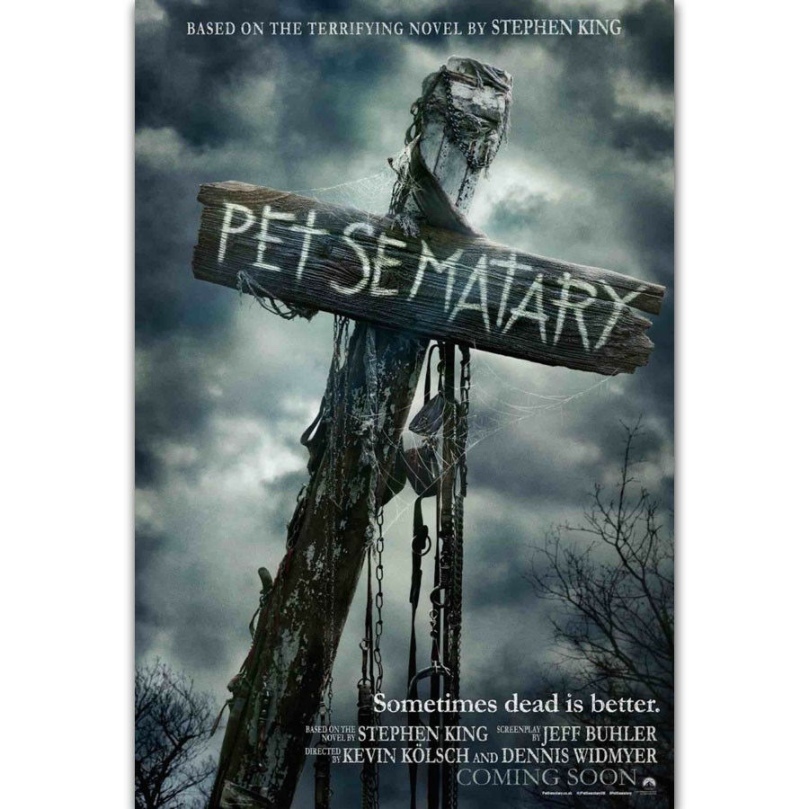
SHOULD YOU TAKE YOURSELF TO SEE THIS MOVIE?
Look, if you’re a big horror movie fan, I’m sure you’ll like it. I guess. I don’t know, I’m clearly not a great judge of horror movies. But I know generally the reception has been good, despite my own personal feelings about it.
One review I watched said he didn’t think it was gruesome or scary enough, so…I guess do with that what you will, I had a horrible time sleeping the night I saw it, but go off, I guess.
I guess what I’m saying is that if horror movies aren’t usually your thing, Pet Sematary will definitely not be your thing at all. There is nothing in it worth seeing outside of it being a horror film–every detail of it only serves to be scary, nothing more.
I guess the little girl is good at acting creepy, but it’s not such a phenomenal job that I’ll insist you see it for that.
For me, though there were some things I liked (the music! The potential! The cats!), it wasn’t enough to have me say I enjoyed the film as a whole, because I really didn’t. I just sat there wishing it was something it was never intended to be–it’s a scary story, and it’s not meant to be anything more.
So if you like that kind of thing, sure. Go see it.
If you don’t, you can skip this one.
As for me, I give Pet Sematary…

1.5/5 GRAVESTONES OF THINGS LOST BECAUSE OF THIS MOVIE!!
I mean no offense if you liked it, I just…why?
TRAILERS TO WATCH OUT FOR
Nothing groundbreaking, especially since it was mostly horror films. At least now I can say I saw a typical horror film, I gave it a chance,…and I hated it. Yay!
Anyway, new trailers include: Midsommar, which is from the same person who directed Hereditary (if you missed that one like I did, it’s pretty much just as dark and hopeless as Pet Sematary, though I know people were absolutely raving about it. Again, go off, I guess). It looks insanely creepy and weird, so uh…yeah probably not.
Scary Stories to Tell in the Dark is such a nostalgic thing for me…I remember countless sleepovers where, if we were allowed, we’d read the books and then, of course, never sleep. The movie looks absolutely horrifying, and honestly? Good. It’s like it took stories that were scary for the kids who read them, and then realized those kids are now adults, so now we have to make it just as scary as it was then. Will I be seeing it? Honestly yeah, probably. Will I regret it? Honestly yeah, probably. The pull of nostalgia, like the cursed burial ground, is strong. My own personal Wendigo!
Annabelle Comes Home IS A BIG, BIG NO. NOPE. MM-MM. NUH-UH. If you come across a creepy doll in a box that says “do not open under any circumstances” THEN YOU DON’T OPEN IT!!! YOU LEAVE!!!! YOU GTFO!!!!!! WHY ARE PEOPLE LIKE THIS!!!!!!!!
Anyway, if Pet Sematary seems like something you’d like, then absolutely go for it. But if you were on the fence about it for whatever reason, I don’t think you need to see it for any reason.
But maybe like listen to the soundtrack, because that’s good.
Otherwise…don’t go exhuming people and re-burying them in cursed burial grounds. Just. Don’t do it.
No.
